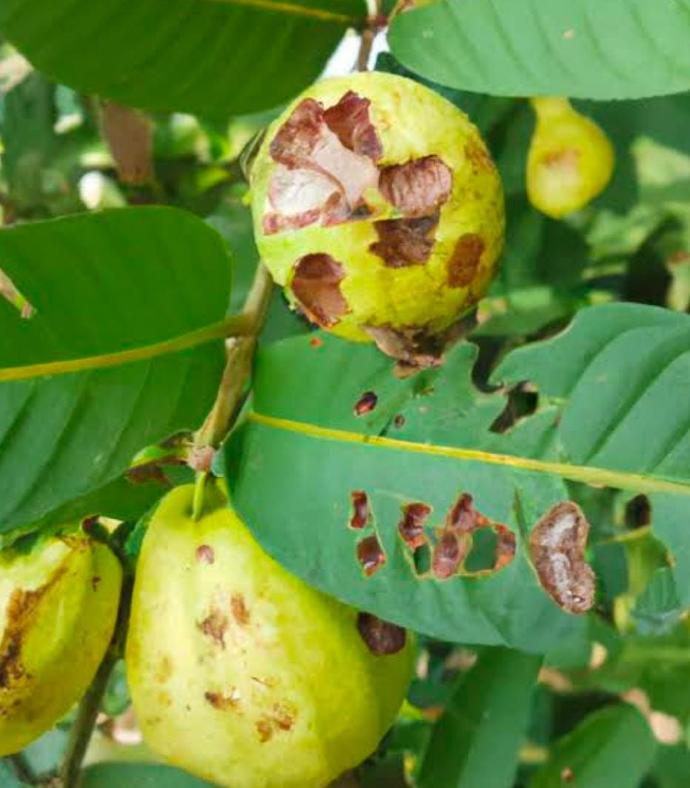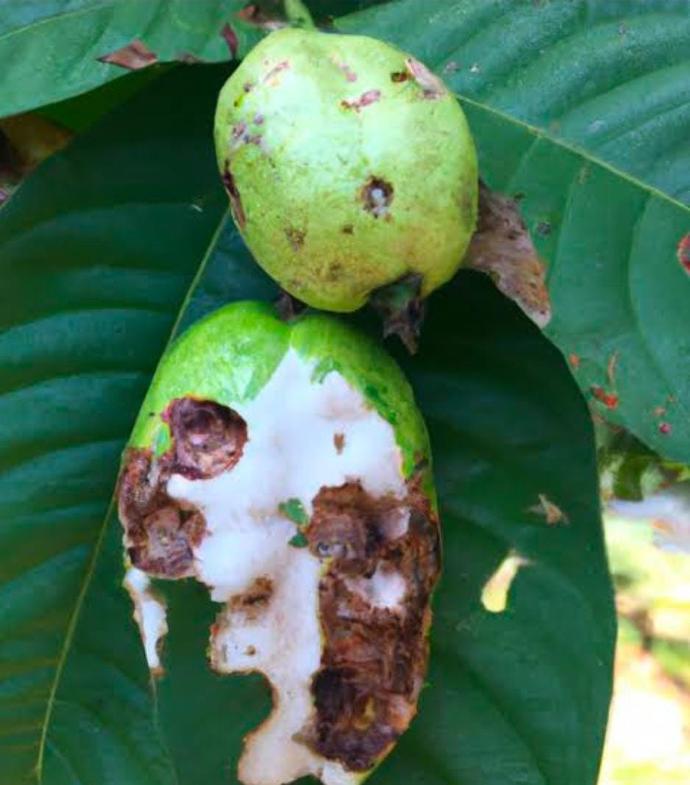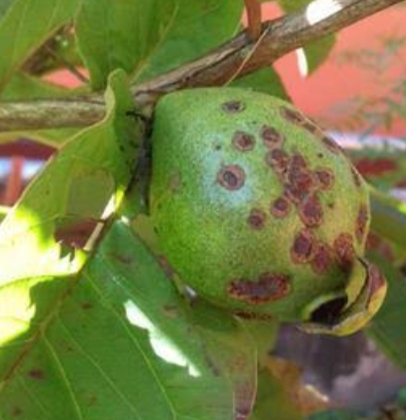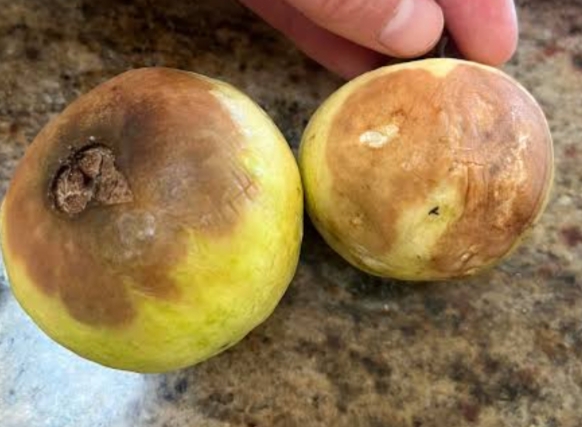Mini guava Plant
Mini Guava, possibly referring to a specific dwarf guava variety, may have care requirements similar to other guava trees. Plant in well-draining soil with full sun exposure. Water consistently, and fertilize during the growing season. Pruning helps shape the tree and remove dead branches.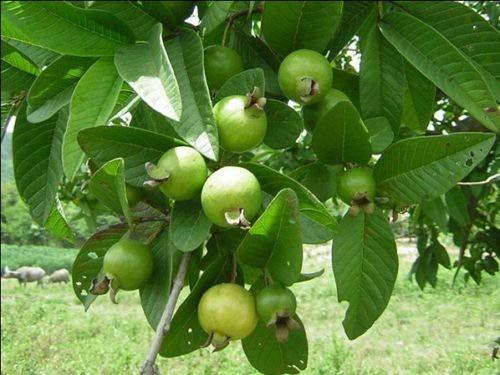
Habit
Tree
Height
2 to 3 m
Growth
Fast
Soil
Well-drained, Sandy Loam
Shade
Full Sun
Moisture
Moist
Edible
Yes
Medicinal
Yes
Origin
South America
Climatic Condition
Tropical, Subtropical
Temperature (°)
20°C to 30°C
Humidity (%)
60% to 70%
Potting media
50% Loam, 40% Sand, 10% Organic Matter
Fertilizers
Organic Fertilizer
Watering
Regular watering
Plant Weight
3 to 5 kg
Flowering Time
Spring to Summer
Soil Ph level
5.5 to 6.5
Water Ph level
6.0 to 7.0
Soil EC
0.5 to 1.0 mS/cm
Yield Per Plant
10 to 20 kg per plant
NPK ratio
10:10:10
life Span
20 to 30 years
Health Benefits
High in Vitamin C, Antioxidant
Suggested Grow Media or Potting Mix ?
50% loamy soil, 30% compost, 20% sand
Suggested Fertigation/Fertilizers
Fertilize every 4 weeks with a balanced fertilizer.
Common Diseases and Remedies
Wilt , fruit canker , fruit rot
Light yellow foliage with loss of turgidity , Premature shedding , Light brown discolouration .
soil drenching
HEALTH BENEFITS
- High in vitamin C, strengthening the immune system.
- Aids in digestion and prevents constipation.
- Rich in antioxidants that promote skin health.
What Is An Mini Guava Tree?
The mini guava plant, also known as the dwarf guava plant, is a compact guava variety suitable for small gardens and indoor cultivation. These plants typically produce smaller fruits compared to traditional guava trees, but still offer the same delicious taste. It can be grown in containers, making it ideal for patio gardens and balconies. Mini guava plants require well-drained soil, regular watering, and plenty of sunlight to grow. Pruning may be necessary to maintain a compact size and shape.

What Are The Different Types Of Mini Guava Plants?
1. 'Ruby Supreme'
A compact variety with small, deep red fruits and a sweet taste.
2. 'Little Ruby'
Similar to 'Ruby Supreme', it produces small red fruits with a sweet taste.
3. 'Taimaroon'
Characterized by small chestnut-coloured fruits and a unique taste.
4. 'Tropical White'
A variety of dwarf guava with small white fruits and a sweet-sour taste.
5. Dwarf Hawaiian
Another small guava variety with small fruits and a tropical flavour.

How to Care Mini Guava Plants ?
1. Location
Mini guava plants can be found at nurseries, garden centers, or online plant stores that specialize in fruit trees and tropical plants. Depending on your region and climate, you may also find them at local farmers' markets or specialty fruit growers. If you are looking for a specific mini guava variety, we recommend contacting your local nursery or doing an online search to find a supplier that carries the variety you are interested in. Additionally, some gardeners may propagate mini guava plants and sell them locally or through online platforms.
2. Sunshine
Mini guava plants, like standard plants, grow in full sunlight. They require at least 6 to 8 hours of direct sunlight each day for optimal growth and fruit production. For health and fruiting potential, it is important to place the plant in a location that receives plenty of sunlight. If growing indoors, place it near a south-facing window that receives as much sunlight as possible. In areas with hot climates, partial shade during the hottest parts of the day can help prevent foliage sunburn.
3. Soil
Mini guava plants prefer well-drained soil that is rich in organic matter. A well-drained, loamy soil mix is ideal for growing. To improve drainage, you can prepare a suitable soil mix by mixing equal parts of garden soil, compost, sand or perlite. Make sure the soil pH is slightly acidic to neutral, ideally between 5.5 and 7.0. You can test your soil pH using a soil pH meter or a test kit available at garden centers.
4. Hydration
Water generously when the top inch of soil feels dry, usually once or twice a week, depending on weather conditions. Water in the morning to allow excess moisture to evaporate during the day, reducing the risk of fungal problems. Water at the base of the plant so that the roots receive water directly. Avoid overly wetting the leaves as this can promote fungal diseases.

5. Nourishment
Mini guava plants benefit from regular fertilization during the growing season, usually spring and summer. Use a balanced fruit tree fertilizer or a fertilizer with a high potassium content to encourage fruit production. When planting, incorporate organic matter such as compost or well-aged manure into the soil. This helps enrich the soil and provides important nutrients to the plants.
6. Issues
Mini guava plants can be susceptible to pests such as aphids, mealybugs, scale insects, and fruit flies. These pests can damage leaves, flowers, and fruit. Regular inspection and appropriate pest control measures: B. Insecticidal soap and neem oil can help prevent pest infestation. Guava plants can be affected by fungal diseases such as anthracnose, powdery mildew, and root rot. These diseases can cause leaf spots, white powdery growths on the leaves, or wilting of the plant. Proper hygiene, good air circulation, and sterilization treatments help prevent and treat fungal diseases. Mini guava plants may exhibit symptoms of nutrient deficiencies such as: B. Yellowing of leaves, stunted growth, or poor fruit development. Testing the soil and applying appropriate fertilizers will help prevent nutrient deficiencies. In addition, foliar sprays containing micronutrients are also effective.
What are the Benefits of Mini Guava ?
Mini guava plants are smaller than standard guava trees, making them suitable for growing in small gardens, balconies, or indoor containers. Mini guava plants can produce aromatic fruits despite their small size. The fruit may be smaller than a regular guava tree, but it still has the same delicious taste and nutritional benefits. Mini guava plants also serve as landscape decorations with their attractive leaves, flowers, and fruits. Its compact size and evergreen leaves make it suitable for decorative purposes in the garden or as a potted plant for patios and patios. Growing mini guava plants allows you to enjoy fresh, homegrown fruit in your garden or balcony. Guava fruit is rich in vitamin C, fiber, and antioxidants, so it can add nutrition to your diet. Mini guava plants are relatively easy to care for once established.
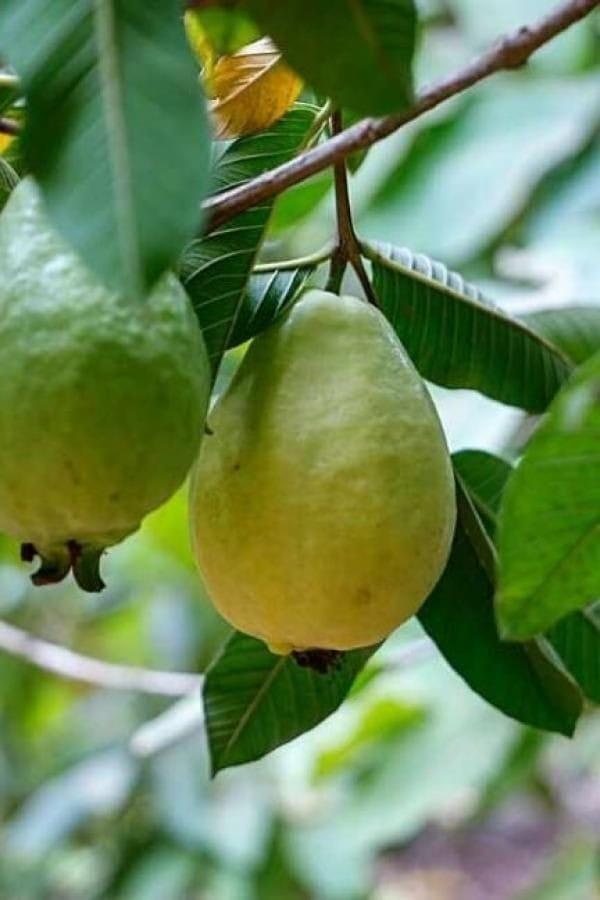
FAQs About Growing Mini Guava
1. What type of soil is best for growing mini guava plants ?
The best soil type for growing mini guava plants is soil that is rich in organic matter and well-drained. A well-drained, loamy soil mix is ideal for growing. To improve drainage, you can prepare a suitable soil mix by mixing equal parts of garden soil, compost, sand or perlite.
2. Can mini guava plants tolerate low temperatures ?
Mini guava plants are generally cold sensitive and prefer warm tropical climates. Although it can tolerate cold temperatures for short periods of time, prolonged exposure to cold can damage or kill the plant. Most mini guava varieties are sensitive to frost and sub-zero temperatures. Frost can damage leaves, flowers, and young fruit, leading to reduced fruit production or even complete loss of the crop.
3. Can I grow mini guavas indoors ?
Yes, you can grow mini guavas indoors, especially if you live in an area with cold winters or limited outdoor space. Growing mini guava plants indoors allows you to control the environment and ensure optimal growing conditions all year round. Mini guava plants need plenty of sunlight to grow and bear fruit. Place the plant near a south-facing window that receives at least 6 to 8 hours of direct sunlight each day.
4. What recipes and dishes can you make using mini guava fruit ?
Make homemade guava jam by boiling mini guava fruits with sugar and lemon juice until thick. You can enjoy it on toast or cookies, or as a topping for yogurt or ice cream. Blend mini guava fruit with yogurt, banana, and honey to create a refreshing and nutritious smoothie. You can also add other fruits such as strawberries or mangoes to further enhance the flavour.
5. What companion plants go well with mini guavas ?
Companion planting benefits mini guava plants by attracting beneficial insects, improving soil health, and providing natural pest control. Marigolds are known for their pest repellent properties, helping to ward off nematodes, aphids, and other harmful insects. Plant around mini guavas for natural pest control.
